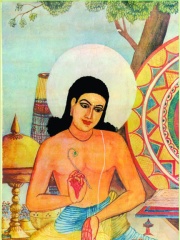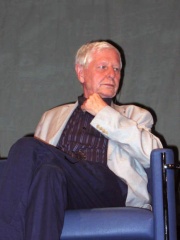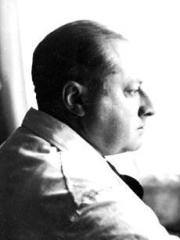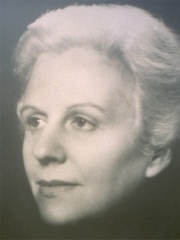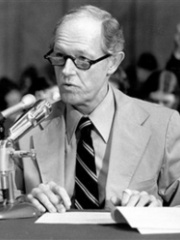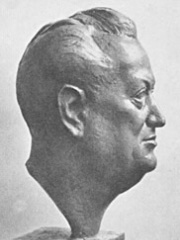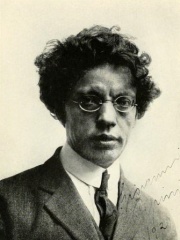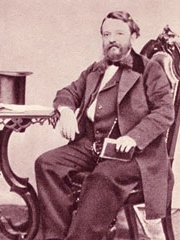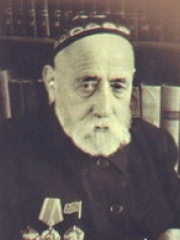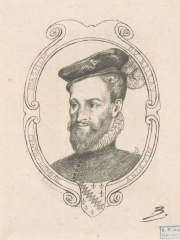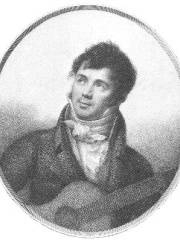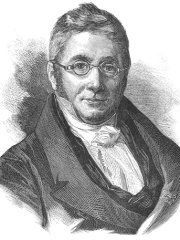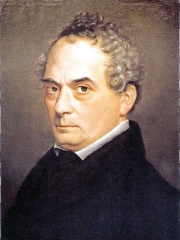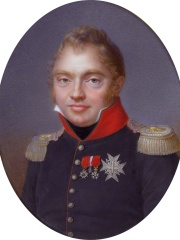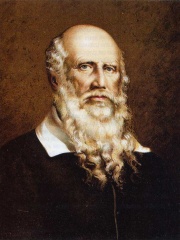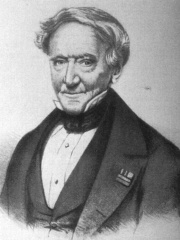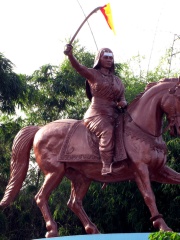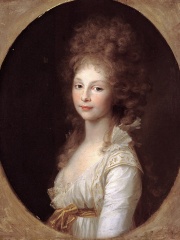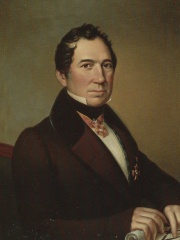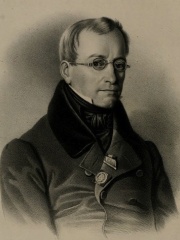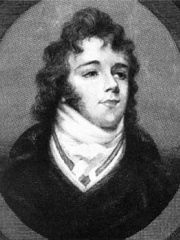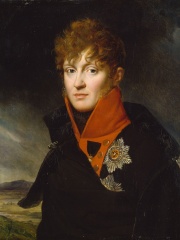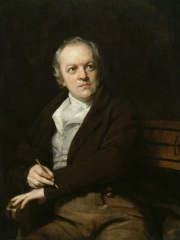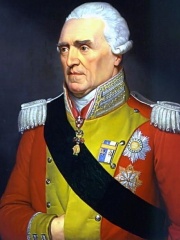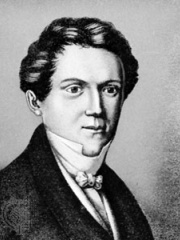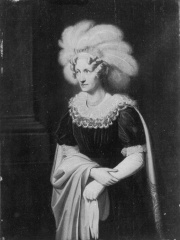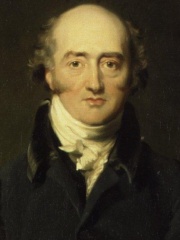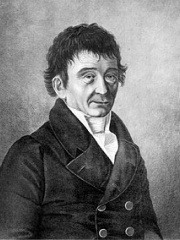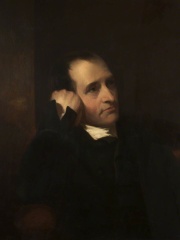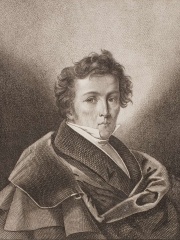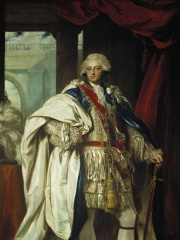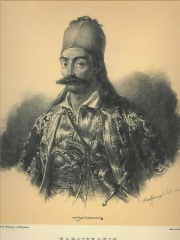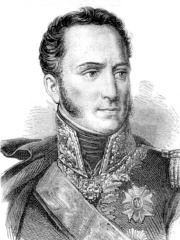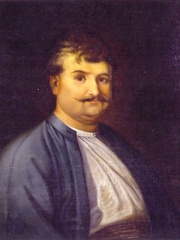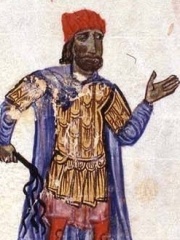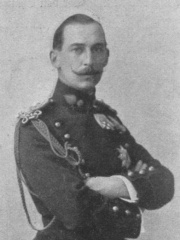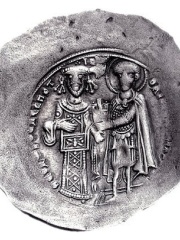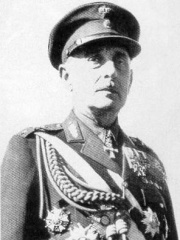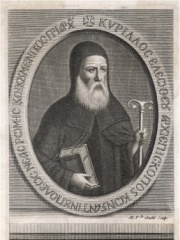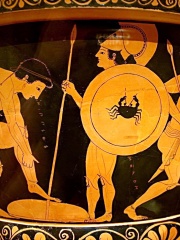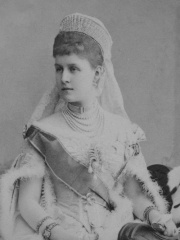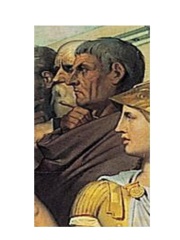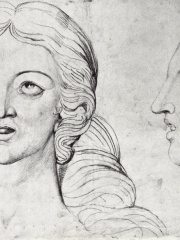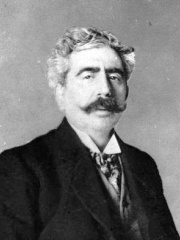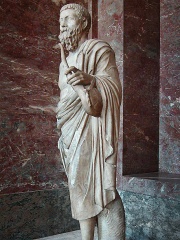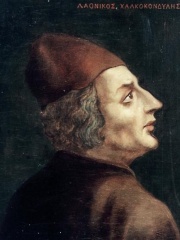WRITER
Ugo Foscolo
1778 - 1827
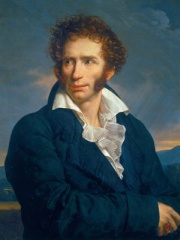
 Ugo Foscolo
Ugo Foscolo
Ugo Foscolo (Italian: [ˈuːɡo ˈfoskolo, fɔs-]; 6 February 1778 – 10 September 1827), born Niccolò Foscolo, was a Greek-Italian writer, revolutionary and poet.He is especially remembered for his 1807 long poem Dei Sepolcri. Read more on Wikipedia
Since 2007, the English Wikipedia page of Ugo Foscolo has received more than 277,497 page views. His biography is available in 50 different languages on Wikipedia (up from 49 in 2019). Ugo Foscolo is the 1,170th most popular writer (down from 1,138th in 2019), the 271st most popular biography from Greece (down from 260th in 2019) and the 33rd most popular Greek Writer.
Ugo Foscolo is most famous for his poem "Le ultime lettere di Jacopo Ortis."
Memorability Metrics
280k
Page Views (PV)
60.60
Historical Popularity Index (HPI)
50
Languages Editions (L)
2.55
Effective Languages (L*)
5.67
Coefficient of Variation (CV)
Notable Works
Page views of Ugo Foscolos by language
Over the past year Ugo Foscolo has had the most page views in the Italian wikipedia edition with 237,011 views, followed by English (29,782), and Spanish (7,459). In terms of yearly growth of page views the top 3 wikpedia editions are Latin (78.63%), Urdu (76.09%), and Basque (68.17%)
Among WRITERS
Among writers, Ugo Foscolo ranks 1,170 out of 7,302. Before him are Sankardev, Hans Magnus Enzensberger, Gottfried Benn, Mercè Rodoreda, Polyaenus, and Bāṇabhaṭṭa. After him are E. Howard Hunt, Rudolf von Sebottendorf, Giovanni Papini, Francesco Maria Piave, Sadriddin Ayni, and Joachim du Bellay.
Most Popular Writers in Wikipedia
Go to all RankingsSankardev
1449 - Present
HPI: 60.61
Rank: 1,164
Hans Magnus Enzensberger
1929 - 2022
HPI: 60.61
Rank: 1,165
Gottfried Benn
1886 - 1956
HPI: 60.61
Rank: 1,166
Mercè Rodoreda
1908 - 1983
HPI: 60.61
Rank: 1,167
Polyaenus
101 - 180
HPI: 60.61
Rank: 1,168
Bāṇabhaṭṭa
601 - 700
HPI: 60.61
Rank: 1,169
Ugo Foscolo
1778 - 1827
HPI: 60.60
Rank: 1,170
E. Howard Hunt
1918 - 2007
HPI: 60.60
Rank: 1,171
Rudolf von Sebottendorf
1875 - 1945
HPI: 60.60
Rank: 1,172
Giovanni Papini
1881 - 1956
HPI: 60.60
Rank: 1,173
Francesco Maria Piave
1810 - 1876
HPI: 60.60
Rank: 1,174
Sadriddin Ayni
1878 - 1954
HPI: 60.60
Rank: 1,175
Joachim du Bellay
1522 - 1560
HPI: 60.57
Rank: 1,176
Contemporaries
Among people born in 1778, Ugo Foscolo ranks 17. Before him are Fernando Sor, Augustin Pyramus de Candolle, Clemens Brentano, Charles Ferdinand, Duke of Berry, Friedrich Ludwig Jahn, and Coenraad Jacob Temminck. After him are Kittur Chennamma, Frederica of Mecklenburg-Strelitz, Carl Ludvig Engel, Carl Bernhard von Trinius, Beau Brummell, and Frederick Louis, Hereditary Grand Duke of Mecklenburg-Schwerin. Among people deceased in 1827, Ugo Foscolo ranks 11. Before him are William Blake, Frederick Augustus I of Saxony, Augustin-Jean Fresnel, Wilhelm Hauff, Maria Theresa of Austria, and George Canning. After him are Ernst Chladni, Samuel Crompton, Wilhelm Müller, Prince Frederick, Duke of York and Albany, Georgios Karaiskakis, and Armand-Augustin-Louis de Caulaincourt.
Others Born in 1778
Go to all RankingsFernando Sor
MUSICIAN
1778 - 1839
HPI: 64.29
Rank: 11
Augustin Pyramus de Candolle
BIOLOGIST
1778 - 1841
HPI: 64.07
Rank: 12
Clemens Brentano
WRITER
1778 - 1842
HPI: 63.70
Rank: 13
Charles Ferdinand, Duke of Berry
POLITICIAN
1778 - 1820
HPI: 62.58
Rank: 14
Friedrich Ludwig Jahn
POLITICIAN
1778 - 1852
HPI: 61.99
Rank: 15
Coenraad Jacob Temminck
BIOLOGIST
1778 - 1858
HPI: 60.78
Rank: 16
Ugo Foscolo
WRITER
1778 - 1827
HPI: 60.60
Rank: 17
Kittur Chennamma
SOCIAL ACTIVIST
1778 - 1829
HPI: 59.67
Rank: 18
Frederica of Mecklenburg-Strelitz
NOBLEMAN
1778 - 1841
HPI: 58.09
Rank: 19
Carl Ludvig Engel
ARCHITECT
1778 - 1840
HPI: 57.53
Rank: 20
Carl Bernhard von Trinius
BIOLOGIST
1778 - 1844
HPI: 57.27
Rank: 21
Beau Brummell
DESIGNER
1778 - 1840
HPI: 56.94
Rank: 22
Frederick Louis, Hereditary Grand Duke of Mecklenburg-Schwerin
POLITICIAN
1778 - 1819
HPI: 56.59
Rank: 23
Others Deceased in 1827
Go to all RankingsWilliam Blake
WRITER
1757 - 1827
HPI: 72.71
Rank: 5
Frederick Augustus I of Saxony
POLITICIAN
1750 - 1827
HPI: 67.05
Rank: 6
Augustin-Jean Fresnel
PHYSICIST
1788 - 1827
HPI: 66.85
Rank: 7
Wilhelm Hauff
WRITER
1802 - 1827
HPI: 63.43
Rank: 8
Maria Theresa of Austria
POLITICIAN
1767 - 1827
HPI: 61.59
Rank: 9
George Canning
POLITICIAN
1770 - 1827
HPI: 60.69
Rank: 10
Ugo Foscolo
WRITER
1778 - 1827
HPI: 60.60
Rank: 11
Ernst Chladni
PHYSICIST
1756 - 1827
HPI: 59.55
Rank: 12
Samuel Crompton
INVENTOR
1753 - 1827
HPI: 59.47
Rank: 13
Wilhelm Müller
WRITER
1794 - 1827
HPI: 58.86
Rank: 14
Prince Frederick, Duke of York and Albany
POLITICIAN
1763 - 1827
HPI: 58.07
Rank: 15
Georgios Karaiskakis
MILITARY PERSONNEL
1780 - 1827
HPI: 57.43
Rank: 16
Armand-Augustin-Louis de Caulaincourt
POLITICIAN
1773 - 1827
HPI: 57.20
Rank: 17
In Greece
Among people born in Greece, Ugo Foscolo ranks 271 out of 1,024. Before him are Rigas Feraios (1757), George Maniakes (998), Prince Nicholas of Greece and Denmark (1872), Vicky Leandros (1949), Theodore Komnenos Doukas (1180), and Agis II (-490). After him are Alexandros Papagos (1883), Cyril Lucaris (1572), Euphronios (-520), Cylon of Athens (-700), Theaetetus (-417), and Princess Alexandra of Greece and Denmark (1870).
Others born in Greece
Go to all RankingsRigas Feraios
WRITER
1757 - 1798
HPI: 60.78
Rank: 265
George Maniakes
MILITARY PERSONNEL
998 - 1043
HPI: 60.75
Rank: 266
Prince Nicholas of Greece and Denmark
POLITICIAN
1872 - 1938
HPI: 60.74
Rank: 267
Vicky Leandros
SINGER
1949 - Present
HPI: 60.61
Rank: 268
Theodore Komnenos Doukas
POLITICIAN
1180 - 1253
HPI: 60.61
Rank: 269
Agis II
POLITICIAN
490 BC - 401 BC
HPI: 60.60
Rank: 270
Ugo Foscolo
WRITER
1778 - 1827
HPI: 60.60
Rank: 271
Alexandros Papagos
POLITICIAN
1883 - 1955
HPI: 60.57
Rank: 272
Cyril Lucaris
RELIGIOUS FIGURE
1572 - 1638
HPI: 60.43
Rank: 273
Euphronios
POLITICIAN
520 BC - 470 BC
HPI: 60.43
Rank: 274
Cylon of Athens
POLITICIAN
700 BC - 700 BC
HPI: 60.43
Rank: 275
Theaetetus
MATHEMATICIAN
417 BC - 369 BC
HPI: 60.41
Rank: 276
Princess Alexandra of Greece and Denmark
POLITICIAN
1870 - 1891
HPI: 60.39
Rank: 277
Among WRITERS In Greece
Among writers born in Greece, Ugo Foscolo ranks 33. Before him are Aristarchus of Samothrace (-217), Corinna (-501), Jean Moréas (1856), Agathon (-448), Lycophron (-320), and Rigas Feraios (1757). After him are Cratinus (-500), Nikephoros Bryennios the Younger (1062), Phrynichus (-535), Semonides of Amorgos (-650), Diagoras of Melos (-450), and Laonikos Chalkokondyles (1423).
Aristarchus of Samothrace
217 BC - 144 BC
HPI: 61.80
Rank: 27
Corinna
501 BC - 501 BC
HPI: 61.76
Rank: 28
Jean Moréas
1856 - 1910
HPI: 60.98
Rank: 29
Agathon
448 BC - 401 BC
HPI: 60.86
Rank: 30
Lycophron
320 BC - 280 BC
HPI: 60.81
Rank: 31
Rigas Feraios
1757 - 1798
HPI: 60.78
Rank: 32
Ugo Foscolo
1778 - 1827
HPI: 60.60
Rank: 33
Cratinus
500 BC - 422 BC
HPI: 59.88
Rank: 34
Nikephoros Bryennios the Younger
1062 - 1137
HPI: 58.80
Rank: 35
Phrynichus
535 BC - 500 BC
HPI: 58.76
Rank: 36
Semonides of Amorgos
650 BC - 550 BC
HPI: 58.38
Rank: 37
Diagoras of Melos
450 BC - 450 BC
HPI: 58.37
Rank: 38
Laonikos Chalkokondyles
1423 - 1490
HPI: 58.37
Rank: 39
